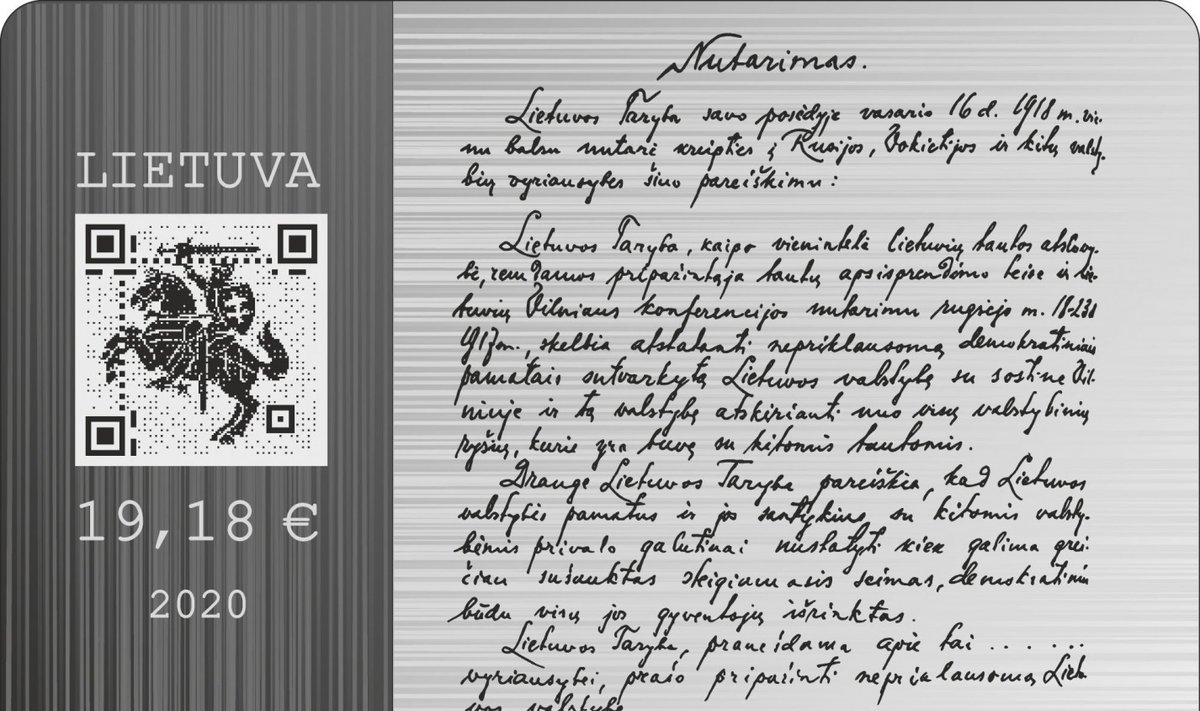“This innovative coin will feature the signatories due to their significant role in the country’s history and contribution to the restoration of our independence. Quite a few of them could be called innovators of their time, as they created and brought progress to Lithuania,” said Marius Jurgilas, Member of the Board of the Bank of Lithuania.
According to him, realisation of this unique idea has provided (and will continue to provide) the Bank of Lithuania with invaluable experience and knowledge in the creation of virtual currencies. “It is especially relevant now since central banks tend to discuss these topics more openly and an outline of such currencies is slowly starting to emerge,” said Mr Jurgilas.
The digital coin is also expected to turn a qualitatively new page in the history of Lithuania’s numismatics and to engage the youth in coin collecting. Therefore, some elements of play will be included in its purchasing process as well.
The Bank of Lithuania is planning to release 24,000 collector tokens created using the blockchain technology. Each token will feature one of the 20 signatories and collectors will have a chance to collect the entire set. The tokens will be divided into 6 categories by the signatories’ areas of activity, with 4,000 tokens allotted to each of them.
When purchasing the digital coin, buyers will get 6 randomly selected digital tokens and only upon collecting a token from each of the 6 categories they will be able to redeem a physical silver coin. The tokens will be available for purchase and storage on the Bank of Lithuania e-shop. In honour of this prominent date, the physical silver coin will bear an unconventional denomination – €19.18 – while its size and form will resemble a credit card, depicting the Act of Independence and its signatories. “I attempted to do a modern take on the historic photograph of the Council of Lithuania that many remember from history books.
The digitised picture consists of more than 36,500 pixels – the approximate number of days that have passed since the Act of 16 February,” said Giedrius Paulauskis, designer of the digital collector coin.
The digital collector coin is going to be yet another step in implementing the Bank of Lithuania’s strategic direction in the field of innovation and fintech, aimed at helping Lithuanian and international companies gain knowledge and carry out blockchain‑oriented research, thus adapting and testing blockchain-based services in the financial sector.
